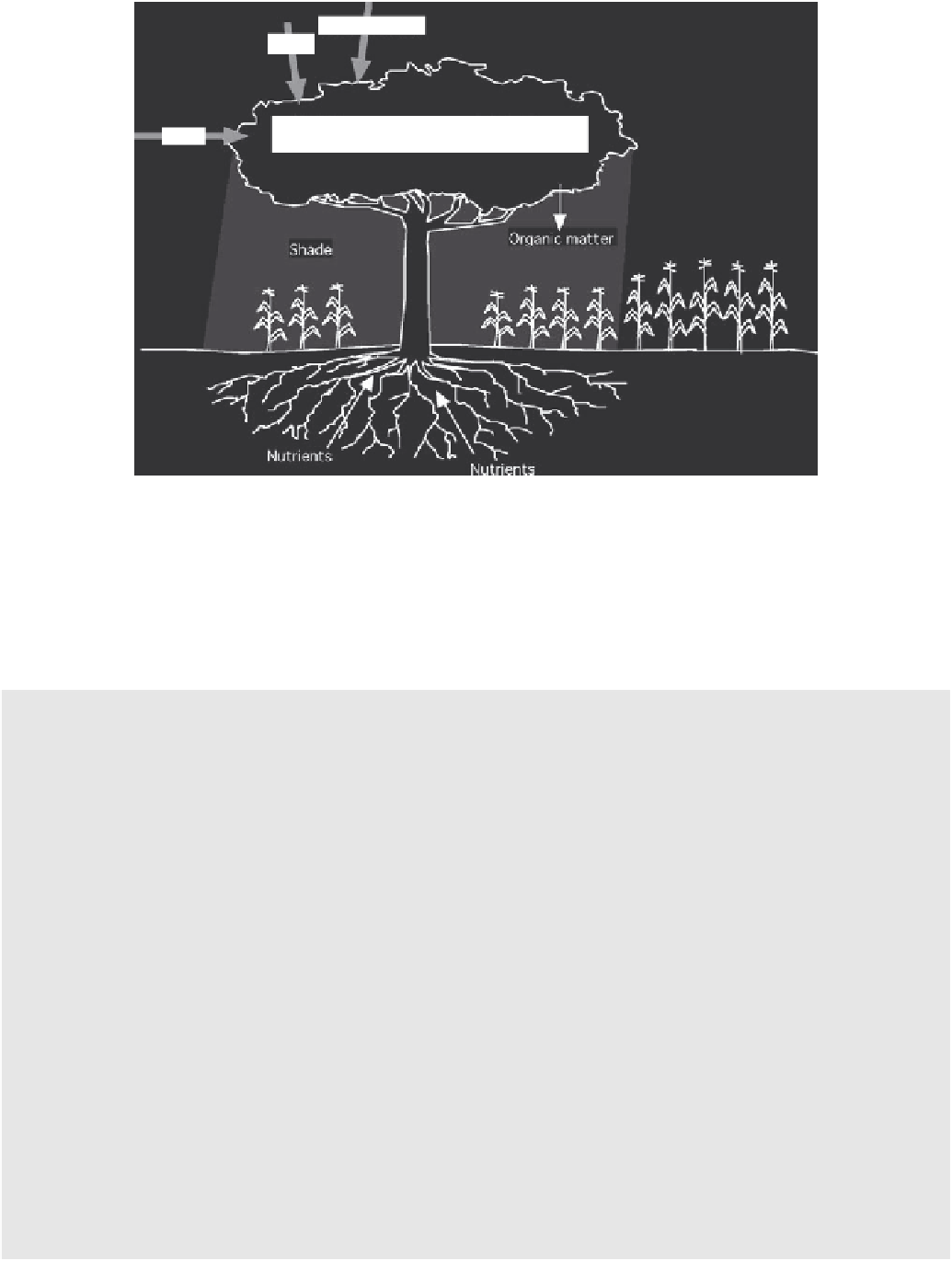Agriculture Reference
In-Depth Information
Solar radiation
Rain
Canopy
interception
Habitat for
beneficial organisms
Wind
Organic matter
Shade
Nutrients
Nutrients
FIGURE 17.7
Effects of a tree on the surrounding agroecosystem.
Because of its size, root depth, and perennial nature, a tree has
significant effects on the abiotic conditions of an agroecosystem and takes part in many biotic interactions. In addition to the effects
and interactions shown, a tree can limit wind and water erosion, provide shade and browse for animals, form mycorrhizal associations,
moderate soil temperature, and reduce evapotranspiration. Leguminous trees can contribute nitrogen to the system through their
association with nitrogen-fixing bacteria. (Adapted from Nair, P. K. R. 1984.
Soil Productivity Aspects of Agroforestry: Science
and Practice in Agroforestry
. International Council for Research in Agroforestry (ICRAF): Nairobi, Kenya.; Farrell, J. 1990. In
S. R. Gliessman (ed.),
Agroecology: Researching the Ecological Basis for Sustainable Agriculture
. pp. 169-183. Springer-Verlag:
New York. With permission.)
EFFECT OF TREES ON SOIL IN TLAXCALA, MEXICO
Trees affect the environment of an agroforestry system in a variety of ways. The specific effects vary from system
to system, depending on factors such as altitude, annual rainfall, wind patterns, geography, soil type — and, of
course, the species of the tree. To effectively use trees in an agroecosystem, it is important to consider all these
factors, as well as the farmer's needs.
In the low-lying areas of Tlaxcala, Mexico, farmers typically maintain some combination of five different types
of trees, either scattered in their fields or arranged as borders. Researcher John Farrell chose to study the two trees
that are most commonly associated with agricultural fields in Tlaxcala,
Prunus capuli
and
Juniperus deppeana
(Farrell, 1990). For each species, he studied the conditions directly under the crown of the tree, in the shade zone
of the tree, in the zone affected by the tree root system, and in the zone outside the direct influence of the tree.
Farrell found that soil conditions were consistently improved by the presence of the trees. Carbon, nitrogen,
and phosphorus content of the soil were significantly higher in the zone of influence of the trees; other beneficial
effects included a higher soil pH, increased moisture content and lower soil temperature. All these effects decreased
with distance from the tree.
On the negative side, harvest yields were reduced directly under the canopy of the tree; corn planted in this
area was shorter and produced approximately half as much grain as corn outside the zone. However, corn in the
partially shaded areas within the zone of root influence produced just as well as corn grown outside the influence
of the tree. Farrell concluded that the lower yield of the shaded corn was due solely to shading and not to competition
for nutrients.
The shading of crop plants under a tree's canopy demonstrates that using trees in agroecosystems always involves
trade-offs. However, with proper management, farmers can maximize the substantial benefits of trees while mini-
mizing their negative impacts on harvest yield.







Search WWH ::

Custom Search